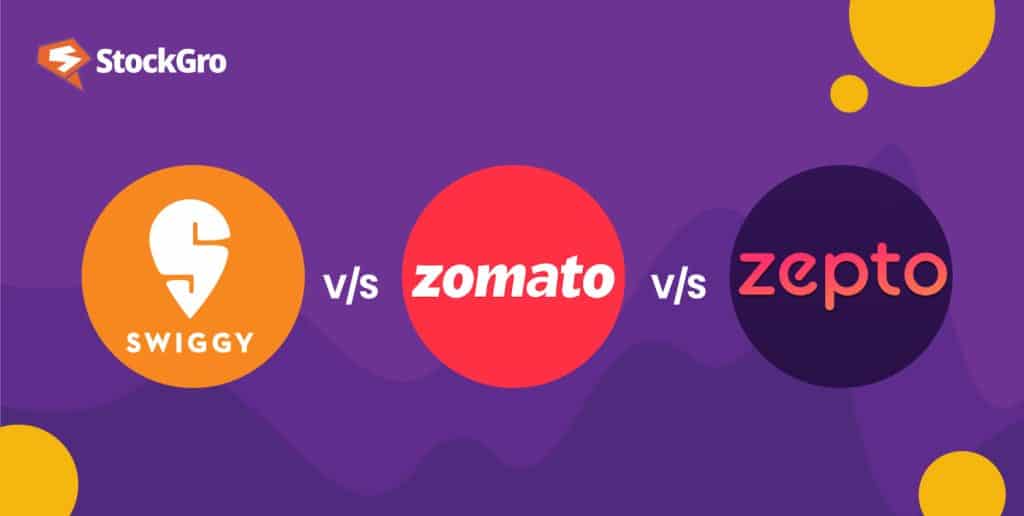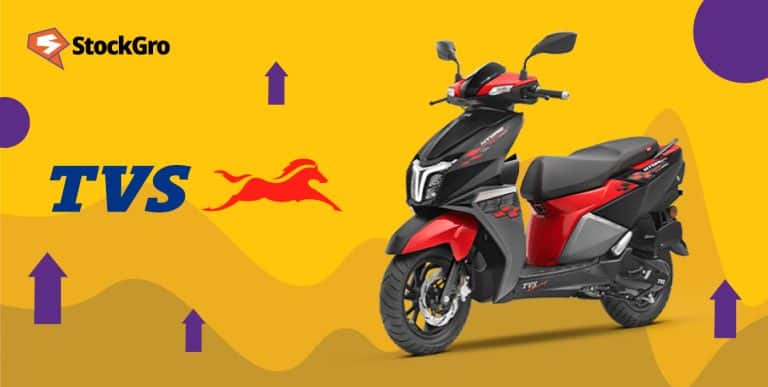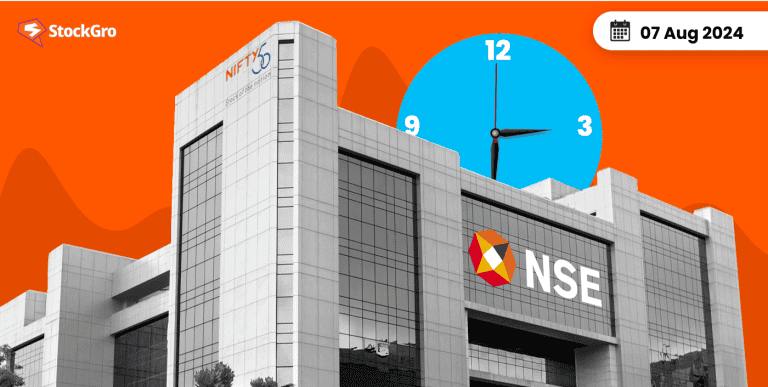
Quick commerce, or Q-commerce, is changing urban retail with its promise of ultra-fast deliveries. Unlike traditional e-commerce, which might take days to deliver, Q-commerce ensures goods reach customers in under an hour. This model thrives in cities plagued by traffic congestion and unreliable public transport, offering a convenient and time-saving alternative.
India’s Q-commerce market is growing rapidly, driven by changing consumer behaviours and infrastructural challenges. In this competitive arena food delivery platforms like Zomato, Swiggy, and Zepto are entering and vying for dominance. Each company employs distinct strategies to attract and retain customers.
In this blog, we will dissect the approaches of Swiggy vs Zomato vs Zepto, exploring how each leverages Q-commerce to enhance their service offerings and capture market share.
Also read: Overview of the e-commerce industry in India
About the industry
The Q-commerce model promises ultra-fast delivery, catering to the urgent needs of city dwellers. Key to this system are micro-warehouses or dark stores, which ensure swift access to small high-demand products like groceries and over-the-counter medicines.
Core aspects:
- Rapid fulfilment: Orders reach customers within a short time frame.
- Strategic storage: Dark stores stock approximately 1.5k-2k essential items.
- Availability: Advanced inventory management systems ensure that popular items are always in stock.
- Proximity: Located near consumer clusters for efficient service.
- Continuous operation: Dark stores operate 24/7, providing round-the-clock convenience.
The Covid-19 pandemic significantly boosted Q-commerce’s growth. Lockdowns and restricted movement heightened the need for quick delivery of essentials, prompting companies like Zomato, Swiggy, and Zepto to rapidly expand their dark store networks.
The Indian Q-commerce market is poised for substantial growth. Projections indicate a potential expansion of 10 to 15 times by 2025, reaching an estimated value of $5.5 billion. This growth is driven by increasing urbanisation and the rising demand for quick, reliable delivery services.
Major FMCG players like Hindustan Unilever, Dabur, Adani Wilmar, and Parle Products have noted a remarkable shift. In FY24, Q-commerce accounted for up to 35% of their e-commerce sales, nearly double the 15-18% share from the previous year.
Nevertheless, achieving profitability remains a significant challenge. The high operational costs and the need for continuous deliveries necessitate efficient logistics and inventory management.
You may also like: A guide to investing in the Indian retail sector: Trends and opportunities
Food delivery expansion
The rise of quick commerce has reshaped the food delivery sector in India, with Zomato, Swiggy, and Zepto leading the charge. These platforms now extend beyond just restaurant meals to include groceries, ready-to-eat items, and daily essentials, reflecting a significant shift in consumer preferences for faster and more diverse delivery options.
Developments in Q-commerce for food delivery:
- Expanded offerings: Q-commerce platforms now deliver not just restaurant food, but also groceries and everyday necessities.
- Strategic alliances: By partnering with local vendors, these platforms enhance their inventory and speed.
- Efficient logistics: Dark stores situated in high-demand zones facilitate swift delivery.
Zomato’s strategic acquisition of Blinkit has broadened its service scope, allowing it to cater to the quick delivery of various products. Swiggy, with its Instamart service, targets frequent grocery buyers, thus diversifying beyond food delivery.
Zepto’s focus on ultra-fast grocery delivery stands out. Its model relies on proximity and efficiency, ensuring that customers receive their orders in minutes, thanks to well-placed micro-warehouses.
Operational strategies are evolving too. Zomato, for instance, uses its existing delivery fleet for Blinkit’s larger orders, showcasing a blend of flexibility and resourcefulness. This integration optimises operations and enhances customer satisfaction.
Top players- Zomato VS Swiggy VS Zepto
Zomato, Swiggy, and Zepto stand as key contenders in India’s instant delivery sector, each distinguished by unique features and services. Let’s delve into an overview and comparison of these platforms:
Zomato- Blinkit
Zomato’s acquisition of Blinkit, formerly Grofers, in 2022, marked a strategic shift, integrating grocery delivery into Zomato’s expanding services. Blinkit now plays a vital role in Zomato’s growth.
Blinkit specialises in ultra-fast deliveries, offering groceries and daily essentials across 26 cities as of May 2024. This integration leverages Zomato’s extensive delivery network, enhancing operational efficiency by using its fleet for Blinkit’s larger orders. Such synergy allows Zomato to meet diverse consumer needs promptly.
In FY24, Blinkit’s Gross Order Value (GOV) reached ₹12,469 crore, forming 24% of Zomato’s total GOV. Recent investments highlight Blinkit’s aggressive expansion plans. With an infusion of ₹300 crore, Blinkit aims to nearly double its store count, adding 474 new locations over the next year. This strategic expansion is designed to solidify Blinkit’s position in the quick commerce market, outpacing competitors.
Swiggy- Instamart
Instamart, launched by Swiggy in August 2020, marked a significant expansion from just food delivery to including groceries and everyday items. This initiative quickly gained popularity, particularly during the pandemic.
The success of Instamart relies on a network of strategically located dark stores, optimised logistics, and advanced technology. These elements ensure rapid pick-up and delivery, catering to the urgent needs of urban customers who prioritise speed and convenience.
In FY24, Swiggy’s combined revenue from food delivery and Instamart surged by 35%, increasing from ₹5,800 crore in FY23 to ₹7,800 crore. Meanwhile, operating losses were significantly reduced, dropping from ₹2,500 crore to ₹1,500 crore. This financial improvement highlights the growing demand for quick commerce and Swiggy’s adeptness in adapting to market trends.
Zepto
Launched in 2021 by Aadit Palicha and Kaivalya Vohra, Zepto has swiftly become a major contender in India’s quick commerce sector. It is headquartered in Mumbai. The company relies on a network of dark stores, strategically placed to facilitate rapid deliveries.
Additionally, Zepto has introduced a café service, offering beverages like coffee and chai along with groceries. This innovative service enhances convenience for customers, making Zepto a versatile platform for various needs.
In terms of financial growth, Zepto has been actively fundraising. The company recently raised $200 million in a Series D round led by Y Combinator’s Continuity Fund, bringing its valuation to $900 million. These funds will support Zepto’s expansion plans and technological enhancements, ensuring it remains competitive in the fast-evolving quick commerce market.
Also read: Cracking the quick commerce code: Zepto’s journey to a $1.4 billion unicorn
Bottomline
The debate continues: which is better, Swiggy or Zomato or Zepto? In the dynamic sector, each brings its unique strengths. Zomato’s Blinkit integration enhances its grocery offerings. Swiggy’s Instamart diversifies its services. Zepto focuses on rapid delivery. Each offers robust solutions, leaving the choice to consumer preference.

